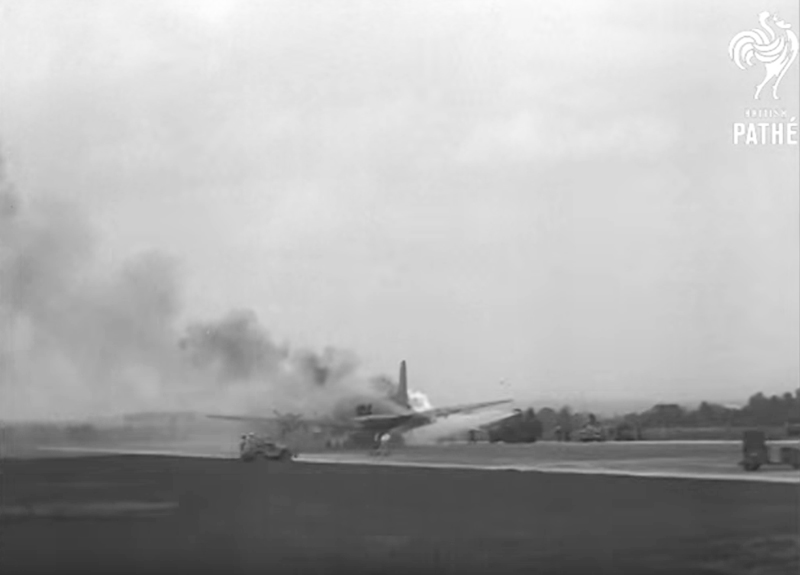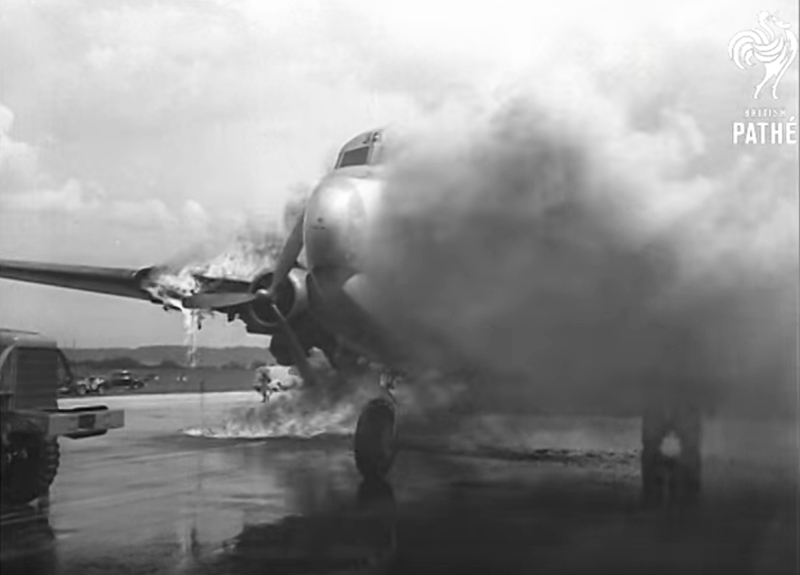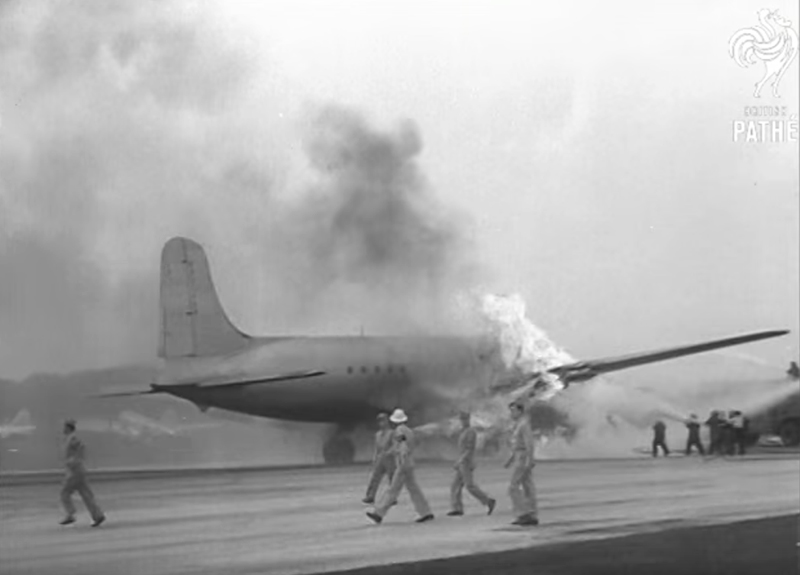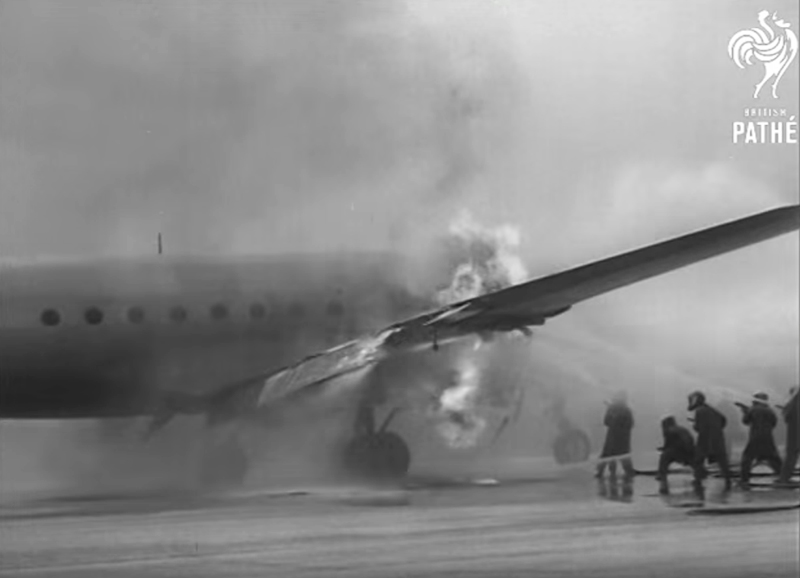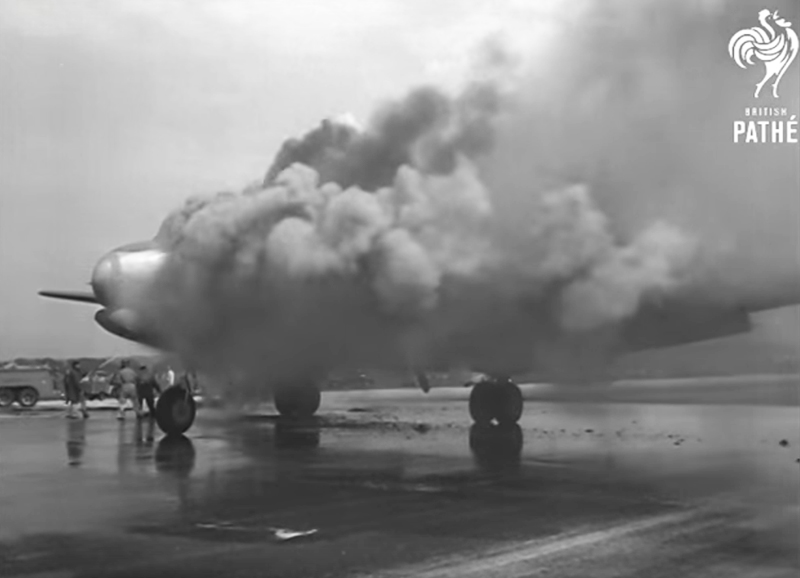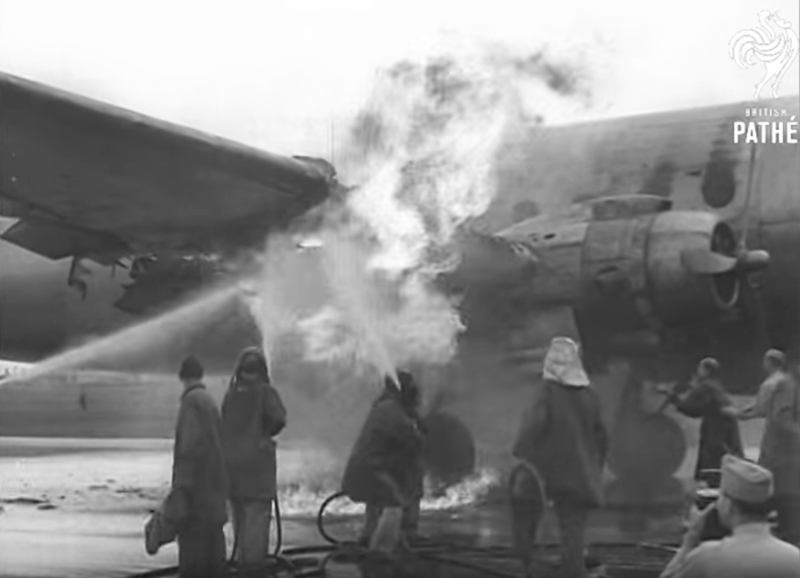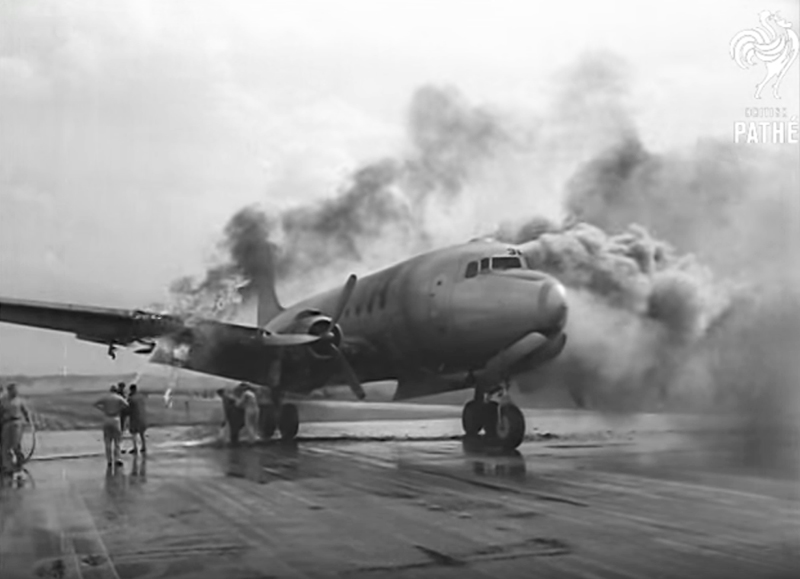Crash of a Douglas C-54A-10-DC Skymaster in Washington
Date & Time:
Sep 12, 1946 at 1342 LT
Registration:
N91068
Survivors:
Yes
Schedule:
Washington-National - Washington-National
MSN:
10342
YOM:
1944
Crew on board:
4
Crew fatalities:
Pax on board:
0
Pax fatalities:
Other fatalities:
Total fatalities:
0
Captain / Total hours on type:
375.00
Copilot / Total hours on type:
332
Aircraft flight hours:
3598
Circumstances:
The crew was performing a local training flight from Washington-National Airport. Enroute, the engine number four caught fire and the crew was unable to extinguish the fire. The captain informed ATC about his situation and obtained the authorization to return to Washington-National Airport for an emergency landing. On final approach to runway 33, the engine number four separated from the wing. Despite the situation, the crew was able to continue the approach and landed safely. While all four crew members were unhurt, the aircraft was considered as damaged beyond repair due to the severity of the damages that the right wing suffered due to fire.
Probable cause:
The Board determines that the probable cause of this accident was the failure in the No. 4 engine of the exhaust valve of the No. 2 cylinder and the exhaust connection of the No. 1 cylinder which resulted in fire in flight. A contributing factor was the inadequacy of the seal between the firewall and nacelle skin and between individual cowl panels which permitted the fire eventually to reach Zone 3 and to become uncontrollable.
Final Report:
